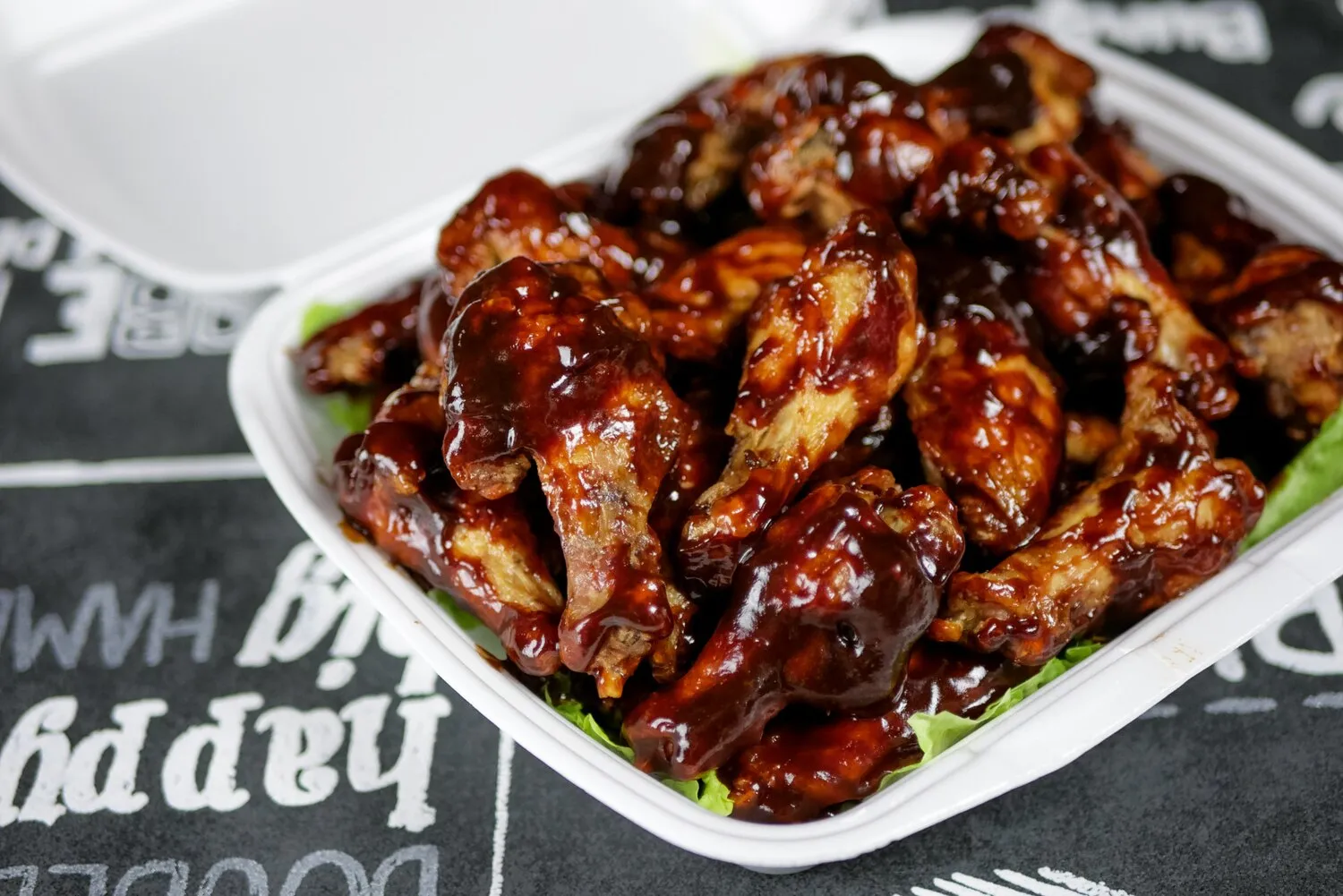
Chicken tenders
Breaded chicken fingers
Nutrition Facts
* The % Daily Value (DV) tells you how much a nutrient in a serving of food contributes to a daily diet. 2,000 calories a day is used for general nutrition advice.
Chicken tenders, also known as breaded chicken fingers, are a relatively modern American invention. While the concept of breading and frying meat dates back centuries in various cultures, the specific form of boneless chicken tenders as a readily available and popular dish emerged in the latter half of the 20th century in the United States, coinciding with the rise of fast-food restaurants and a preference for convenient, family-friendly meals.
Chicken tenders are deeply embedded in American food culture, especially within fast-food chains and family restaurants. They're a staple kids' menu item and a popular choice for casual dining. They symbolize convenience, comfort, and affordability.
Fast Food Staple
Chicken tenders are a cornerstone of American fast-food culture, widely available at major chains and drive-through restaurants, making them an easily accessible and quick meal option.
Kid-Friendly Favorite
Due to their mild flavor, tender texture, and convenient size, chicken tenders are a highly popular choice for children, often served with fries and a dipping sauce.
Game Day Snack
Chicken tenders are frequently served as appetizers or snacks during sporting events and other gatherings, contributing to the communal and casual atmosphere.
Chicken tenders offer a savory and satisfying flavor profile, characterized by the tender chicken, crispy breading, and often a hint of seasoning. The flavor is generally mild and appealing to a wide range of palates, making it a versatile dish.
The primary flavors come from the chicken itself, typically chicken breast or tenderloin, which provides a mild, slightly meaty taste. The breading, usually a combination of flour, breadcrumbs, and spices, adds a crispy texture and savory flavor. Common seasonings include salt, pepper, garlic powder, onion powder, paprika, and sometimes a touch of cayenne pepper for a subtle kick. Dipping sauces, such as honey mustard, barbecue sauce, ranch dressing, or ketchup, further enhance the flavor and add variety.
Brining for Moisture
Brining the chicken tenders in a saltwater solution before breading helps to retain moisture during cooking, resulting in juicier and more flavorful tenders.
Double Breading for Extra Crispiness
Dredging the chicken in flour, then egg, and then breadcrumbs, followed by repeating the breadcrumb step, creates a thicker, crispier coating that holds up well during frying or baking.
Oil Temperature is Key
Maintaining a consistent oil temperature (around 350-375°F or 175-190°C) during frying ensures that the chicken cooks evenly and the breading becomes golden brown and crispy without burning. Use a thermometer to monitor the oil temperature.
Baking for a Healthier Option
For a healthier alternative to frying, bake the breaded chicken tenders in a preheated oven at around 400°F (200°C) until cooked through and golden brown, flipping halfway through for even browning. Consider using an air fryer for a similar effect.
Explore additional Appetizers dishes and restaurants
Explore AppetizersDiscover top dining spots and culinary experiences in Burgos.
Explore BurgosLearn more about the food culture, restaurant scene, and culinary heritage of Spain.
Explore Spain